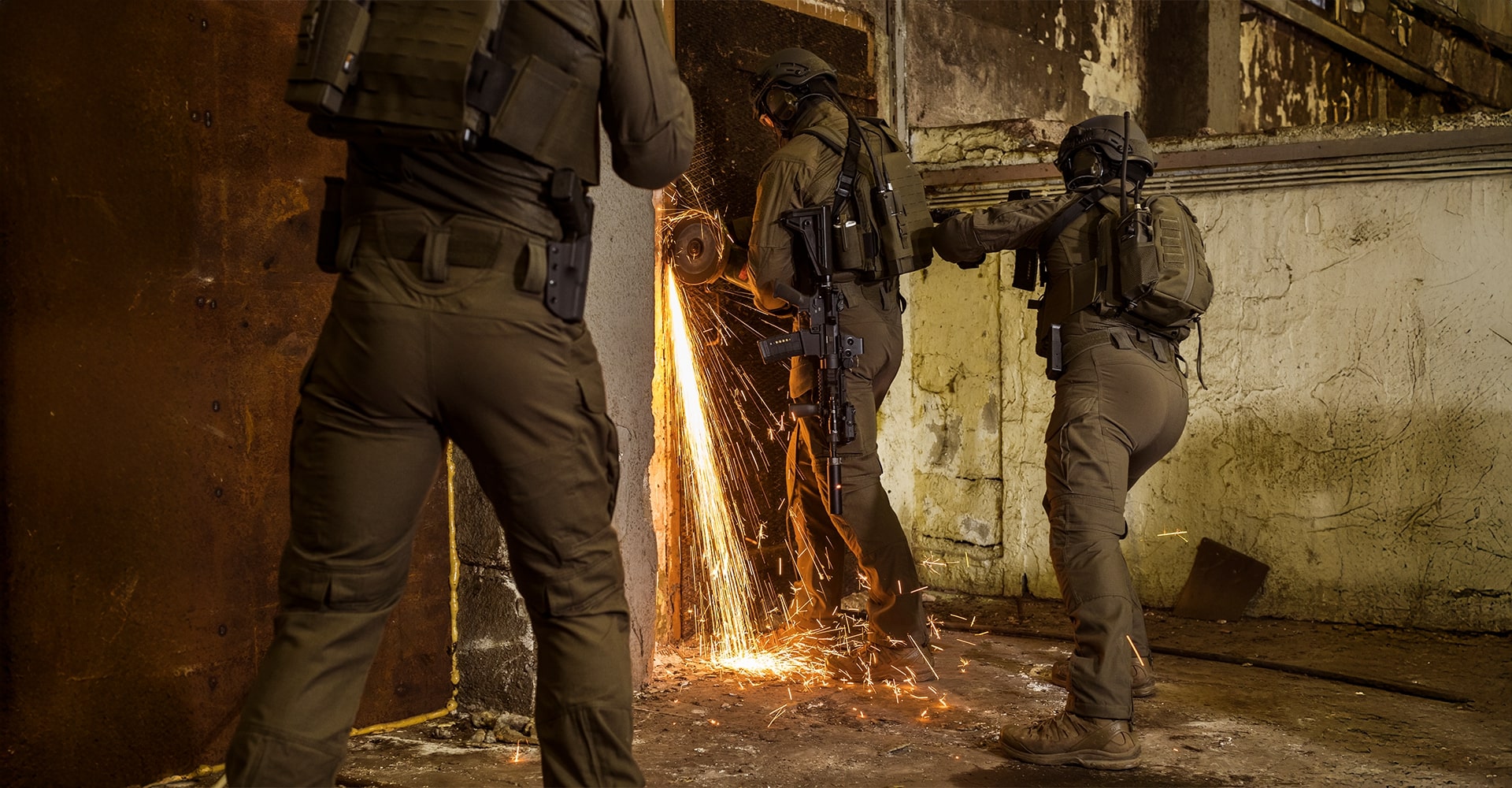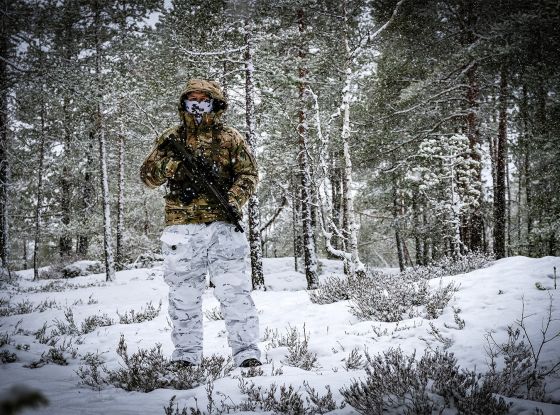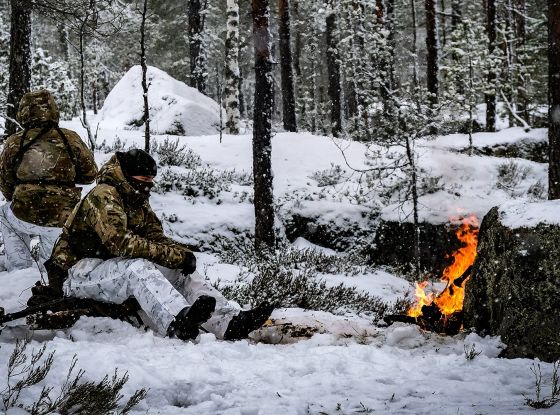When fire hits, it doesn’t warn you. It flashes, rolls, or erupts—and if your gear isn’t ready, you don’t get a second chance. Flame-retardant clothing is more than a spec line. For those operating near explosives, fuel, flashover hazards, or electrical arcs, it’s a critical layer of survival. But here's the part that often gets overlooked: if your gear protects you from fire but limits your movement, overheats your body, or wears you down mid-mission, it becomes its own kind of risk. The challenge isn’t just about safety certifications. It’s about gear that works when everything’s on the line—without slowing you down.
In this blog post:
- Understanding Flame-Retardant Clothing: What Are You Really Wearing?
- Why Flame-Retardant Clothing Is Mission-Essential
- The Trade-Offs: What’s Often Sacrificed for Flame Protection?
- What Modern Design Is Doing Differently
- Why Fit and Layering in Flame-Retardant Clothing Matter
- Technical Advances Driving Better Performance
- What Operators Are Reporting from the Field
- Conclusion
So what does the right flame-retardant tactical clothing actually look like in the field? Let’s break it down.
Understanding Flame-Retardant Clothing: What Are You Really Wearing?
Flame-retardant (FR) clothing is engineered to resist ignition, limit flame spread, and self-extinguish when the heat source is gone. In the field, that means more time to react, less damage to skin and gear, and a better shot at walking away from worst-case scenarios.
To meet those demands, garments are certified against strict industry standards like:
- EN ISO 11612: Protection against heat and flame
- EN ISO 15025: Flame spread testing
- ASTM D6413: Vertical flame resistance
For a closer look at how these standards are tested and what they really mean in the field, read our deep dive on Flame-Resistant Clothing Testing Methods.
You’ll often see the terms flame-retardant and flame-resistant used interchangeably. While both types of gear offer essential fire protection, there's a technical distinction:
- Inherent FR fabrics: The flame resistance is built into the fibres themselves (e.g., aramid, modacrylic, FR viscose). These materials will not ignite easily and are designed to self-extinguish without relying on chemical treatment.
- Treated FR fabrics: These are traditional fabrics, such as cotton or cotton blends, that are chemically treated to achieve flame-retardant properties. The treatment slows ignition and limits flame spread but may reduce over time with wear and washing.
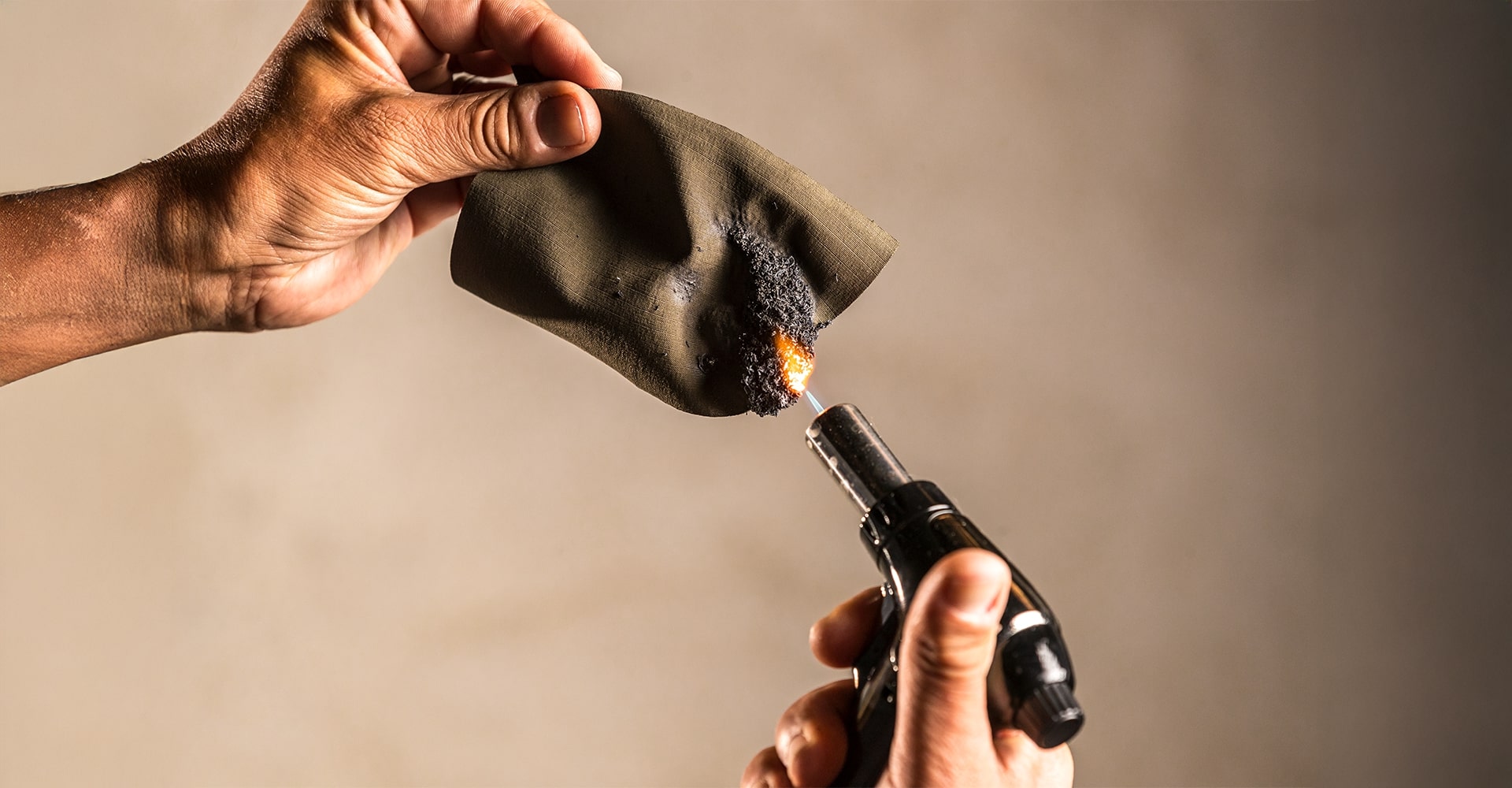
Some modern tactical uniforms are built using hybrid material systems—blending fibres such as polyamide, aramid, and elastane. This combination allows garments to meet flame-retardant requirements while also improving mobility, abrasion resistance, and weight balance. The result is a more versatile solution that performs reliably under thermal stress without sacrificing flexibility or long-wear comfort in the field.
Want a full breakdown of how flame-retardant garments work, what they’re made of, and how to choose the right type for your mission? Check out our Ultimate Guide to FR Clothing.
Why Flame-Retardant Clothing Is Mission-Essential
In tactical scenarios involving open flames, fuel storage, breaching charges, or electrical systems, FR garments aren’t a bonus—they’re a line of defense that buys you time and space to act.
But in the real world, it’s never that simple. Many FR solutions tick the certification boxes but fail in the places that matter: movement, comfort, and endurance. That can mean slowed reaction time, overheating, and operator fatigue—none of which belong in high-risk environments.
So, how do you get protection without sacrificing operational performance?
SUBSCRIBE TO UNLOCK OUR EXCLUSIVE CONTENT
Enter your email and get timely updates and relevant intel on tactical topics directly to your inbox.
You are signing up to receive updates via e-mail from which you can opt out at any time. Visit our privacy policy for more info.
The Trade-Offs: What’s Often Sacrificed for Flame Protection?
FR garments typically use fibres like Nomex®, Kevlar®, modacrylic, or treated cotton blends to meet safety standards. They’re effective under heat and flame—but they come with their own limitations in dynamic settings.
Where traditional FR gear often fails:
- Mobility: Stiffer materials limit flexibility, particularly during dynamic movements like breaching, climbing, or sprinting.
- Breathability: Heavier weaves reduce airflow, increasing internal heat buildup.
- Weight: Additional layers for flame protection can bulk up your entire loadout.
- Thermal Regulation: Poor moisture management can lead to sweat-soaked garments and faster fatigue.
In demanding field conditions, those shortcomings show up fast—and stay with you until the mission ends.
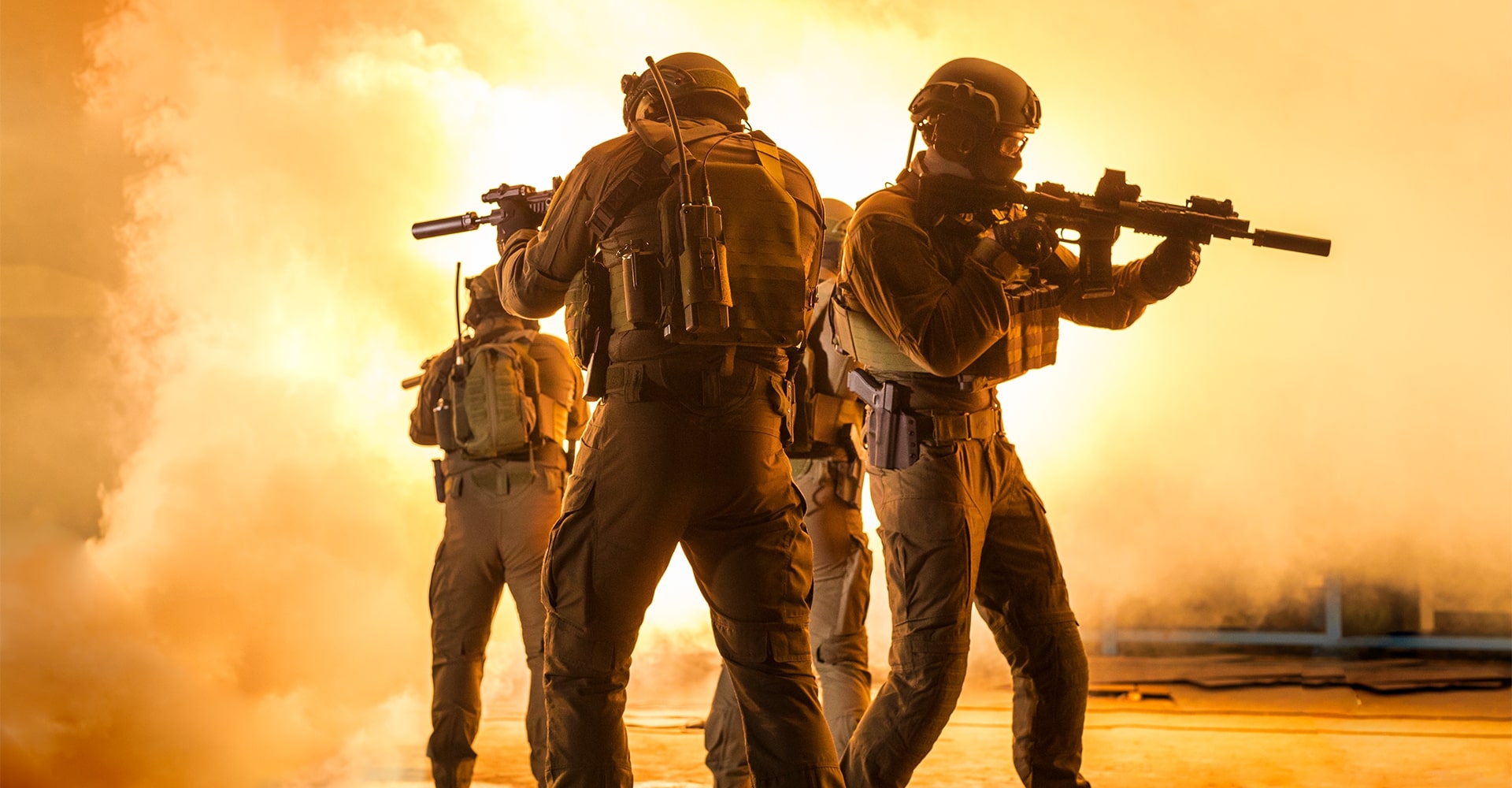
What Modern Design Is Doing Differently
Fortunately, the game is changing. Tactical gear manufacturers are engineering solutions that break away from the traditional trade-offs.
Today, it’s possible to combine full flame protection with real-world performance. Here’s how:
Hybrid Fabric Zones
Strategically placing heavy-duty FR materials in high-risk areas (such as the chest, shoulders, or outer limbs) while using breathable, stretch-enhanced fabrics in lower-risk zones helps restore full-body mobility without giving up protection.
Ergonomic Construction
Features like articulated knees, pre-shaped elbows, and gusseted crotches allow unrestricted movement. These aren’t cosmetic details—they’re what make running, kneeling, climbing, or breaching possible while staying protected.
Smarter Moisture Management
Modern FR gear integrates ventilation zippers, airflow-enhancing mesh, and moisture-wicking base layers to reduce heat stress and sweat buildup.
Why Fit and Layering in Flame-Retardant Clothing Matter
Protection is only part of the story. Fit, compatibility, and layering are what determine whether your gear holds up during real-world operations.
Layering
Wearing a non-FR base layer under an FR outer shell creates a false sense of security. For complete protection, the entire clothing system—base, mid, and outer layers—should be flame-resistant.
Fit
Clothing must integrate with mission gear such as plate carriers, belts, and packs without causing pressure points, restrictions, or chafing. A good fit allows for freedom of movement and reduces heat buildup.
Environmental Adaptability
Operators in variable climates require gear that can adapt to both heat and cold. FR clothing systems must be modular—allowing for insulation, ventilation, and moisture control depending on the mission setting.
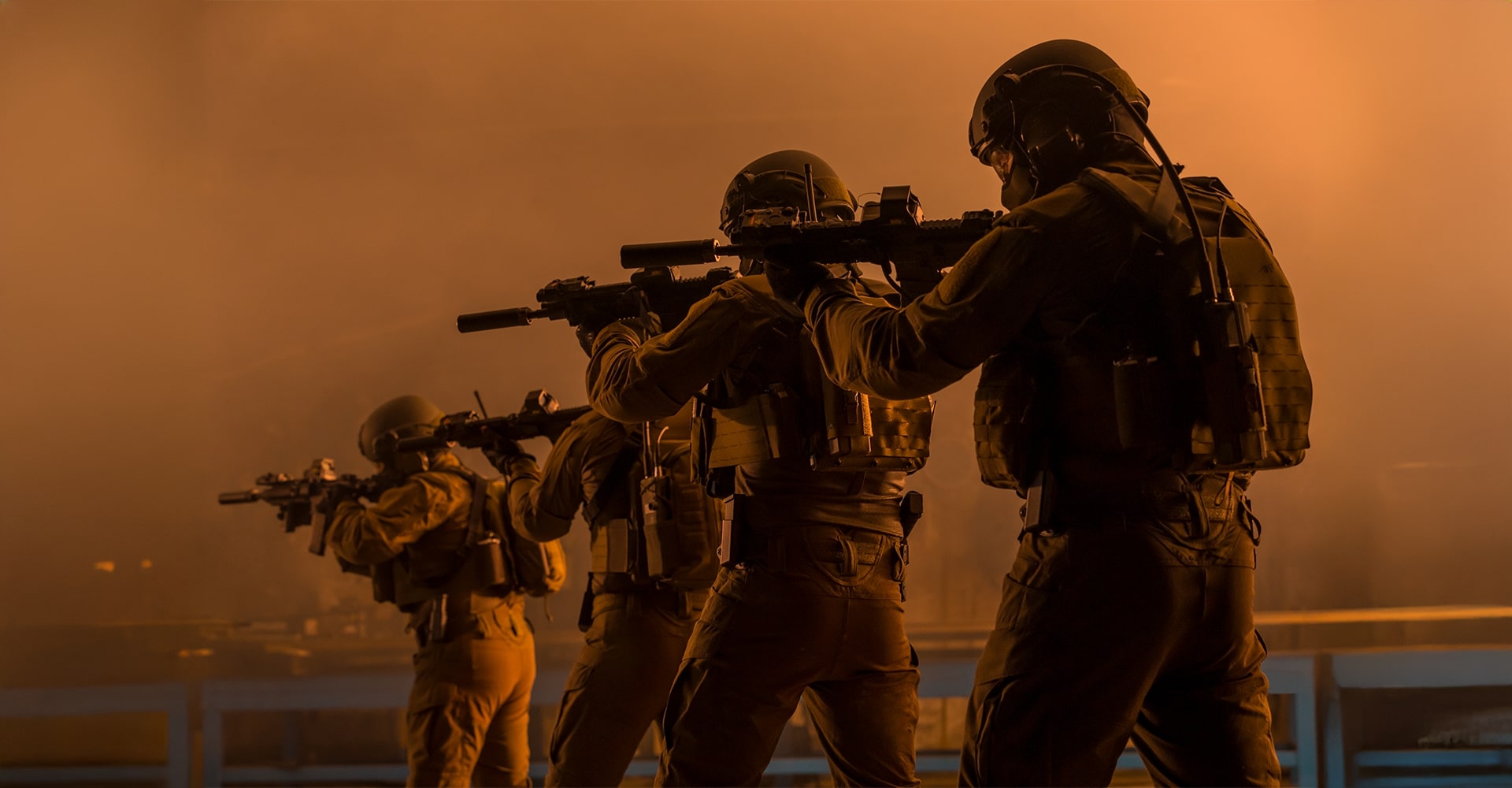
Technical Advances Driving Better Performance
Improvements in textile engineering are making a real difference in how FR garments perform.
Here’s what’s changing:
- Lighter, tougher materials that meet or exceed thermal and mechanical performance standards
- Integrated stretch zones for enhanced agility with zero compromise in flame protection
- Advanced DWR coatings to repel moisture while allowing vapor to escape
- Laser-cut reinforcements that reduce bulk but increase wear resistance and functionality
These features contribute to gear that performs across a full mission profile—from insertion to extraction—without failing in critical moments.
What Operators Are Reporting from the Field
Operators working in environments prone to flame exposure—whether breachers, EOD teams, or infantry operating near fuel sources—consistently report:
- Less fatigue during long missions, even when worn under armor
- Improved thermal regulation in both hot and cold climates
- Better integration with mission-critical equipment
- Most importantly: confidence in gear that does its job without slowing them down
This shift isn't theoretical—it's operationally tested. Gear that performs well in simulations but fails under mission stress is no longer acceptable.
If you’re looking for flame-retardant tactical clothing that performs under pressure—without restricting movement or adding unnecessary bulk—take a look at the Striker FR Gen.2 BDU. It’s built to meet the demands of high-risk environments while keeping comfort and functionality front and center.
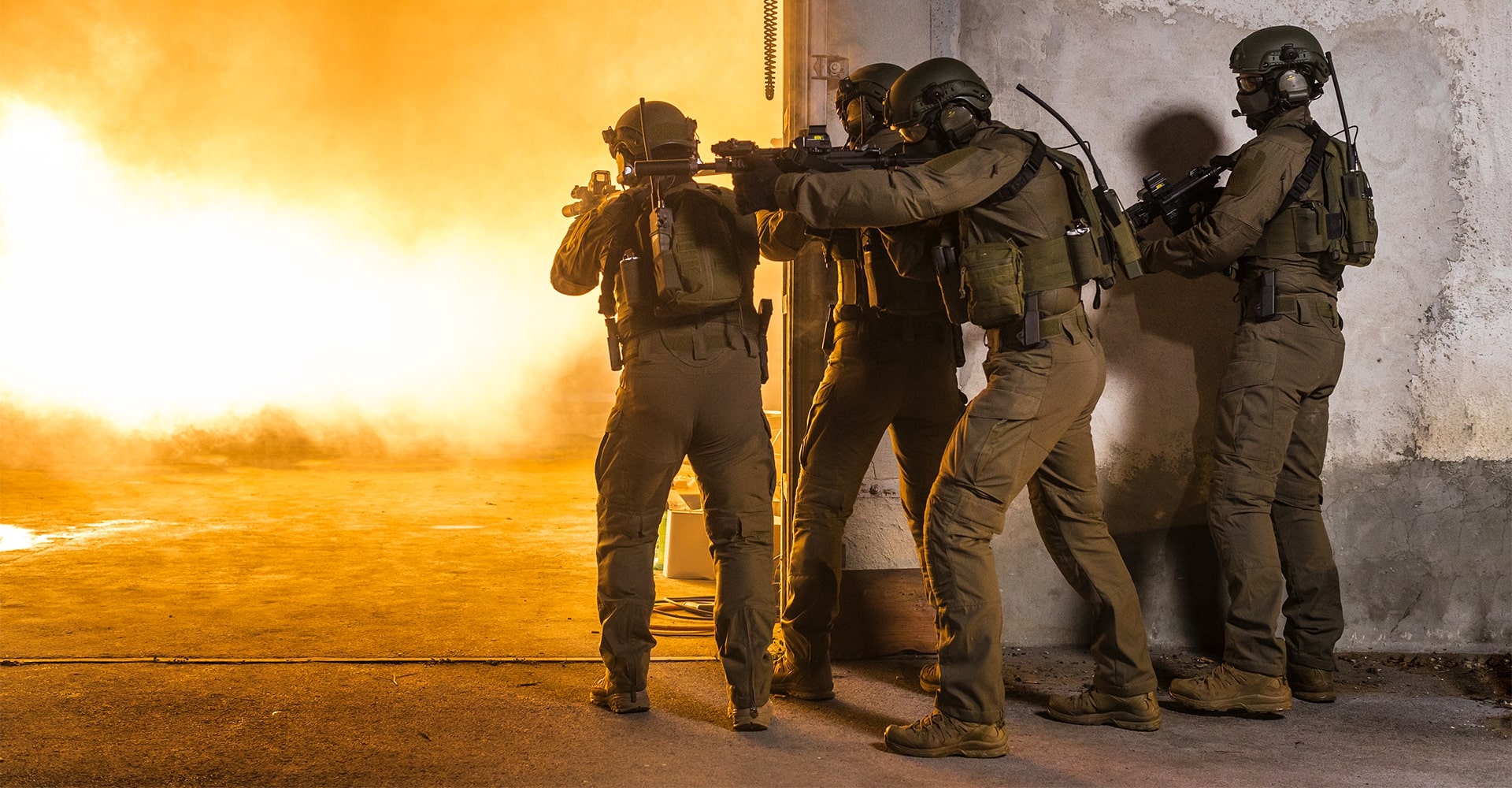
Conclusion
FR clothing has evolved. What used to be stiff, hot, and restrictive is now field-adapted, mission-ready, and performance-driven. The next generation of flame-retardant tactical gear proves that you don’t need to compromise.
You can have:
- Certified flame resistance
- All-day comfort
- Freedom of movement
- Operational adaptability
All in one system.

